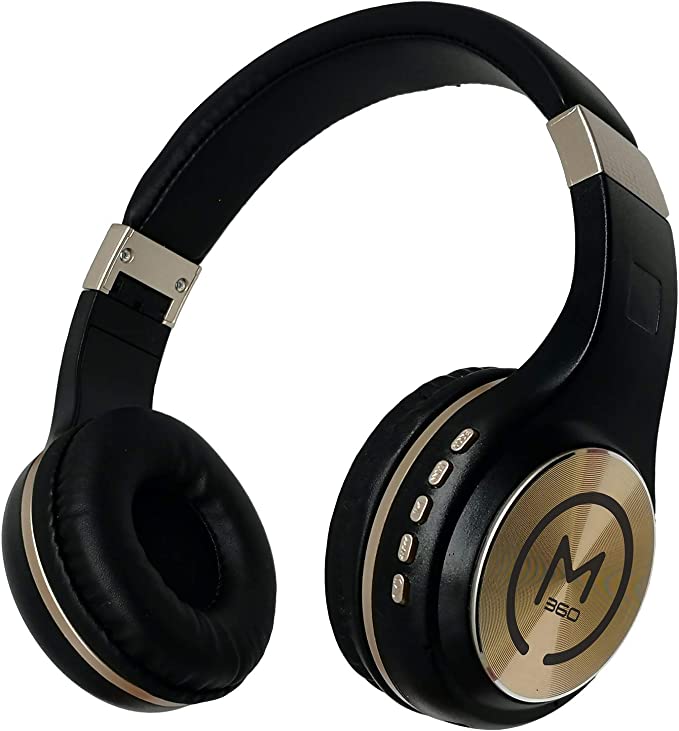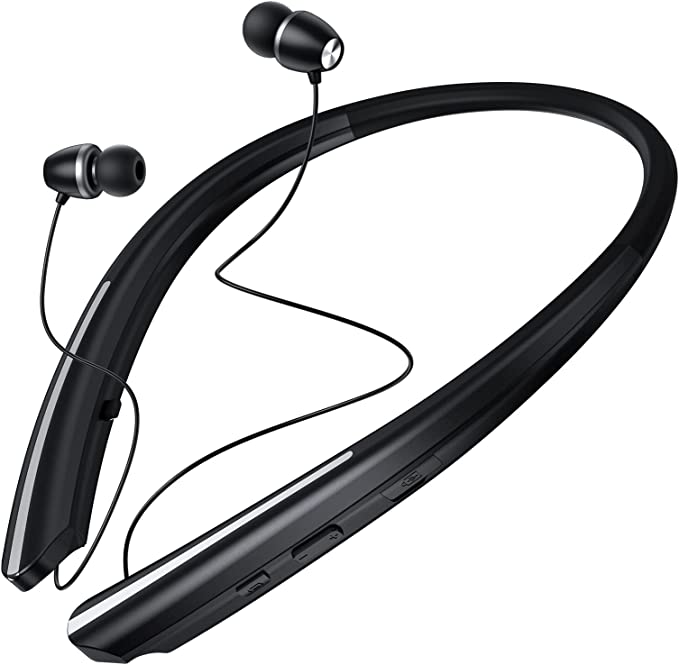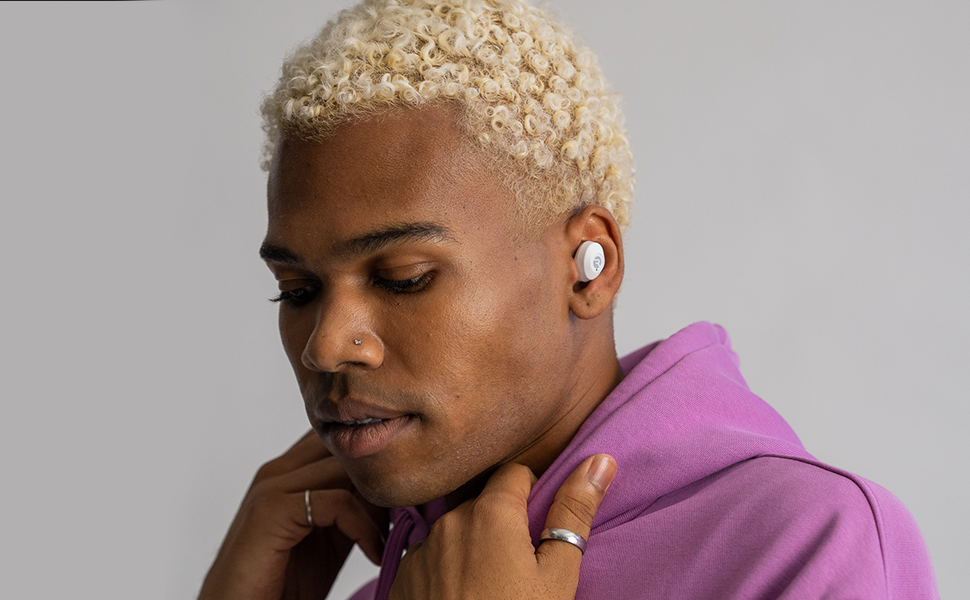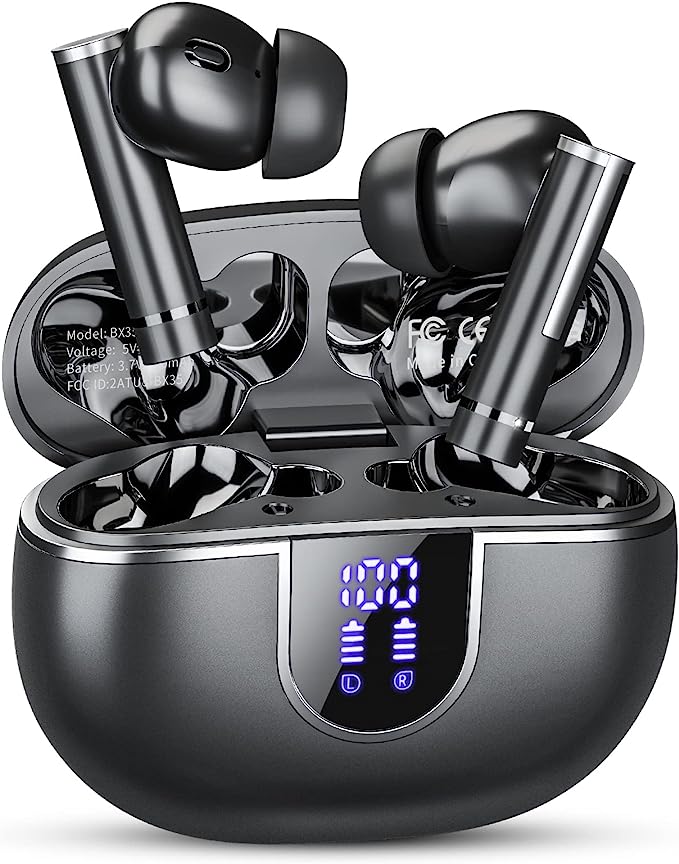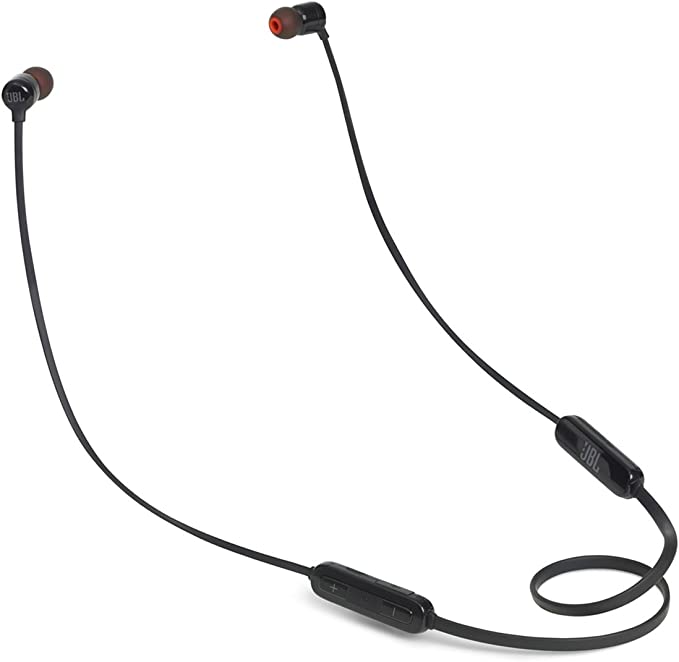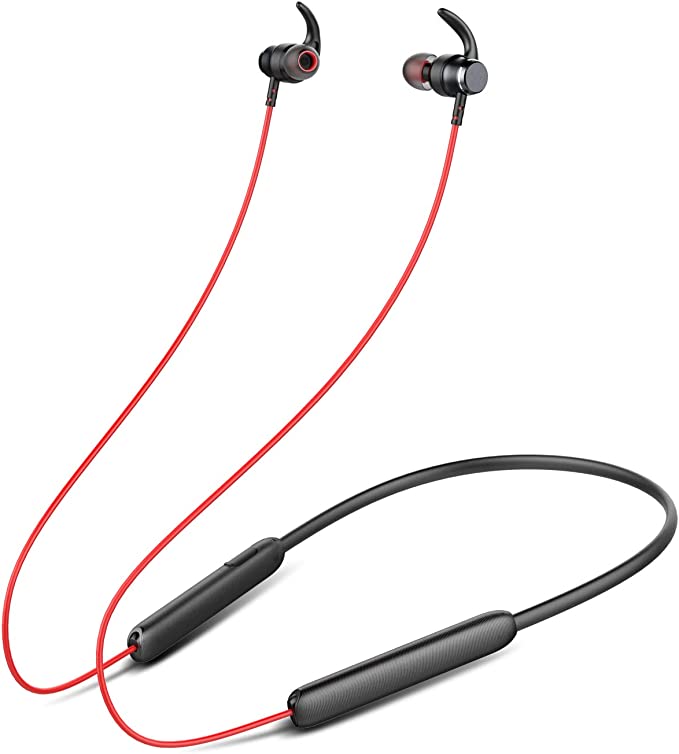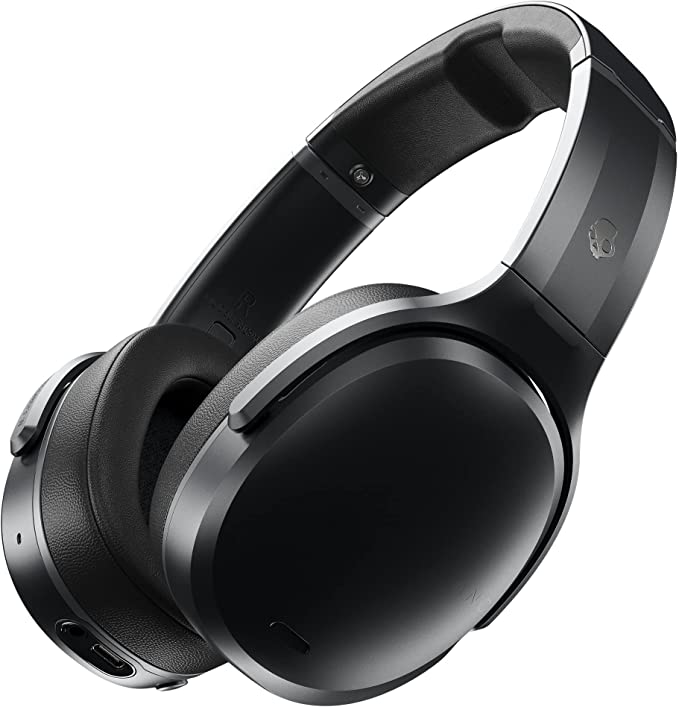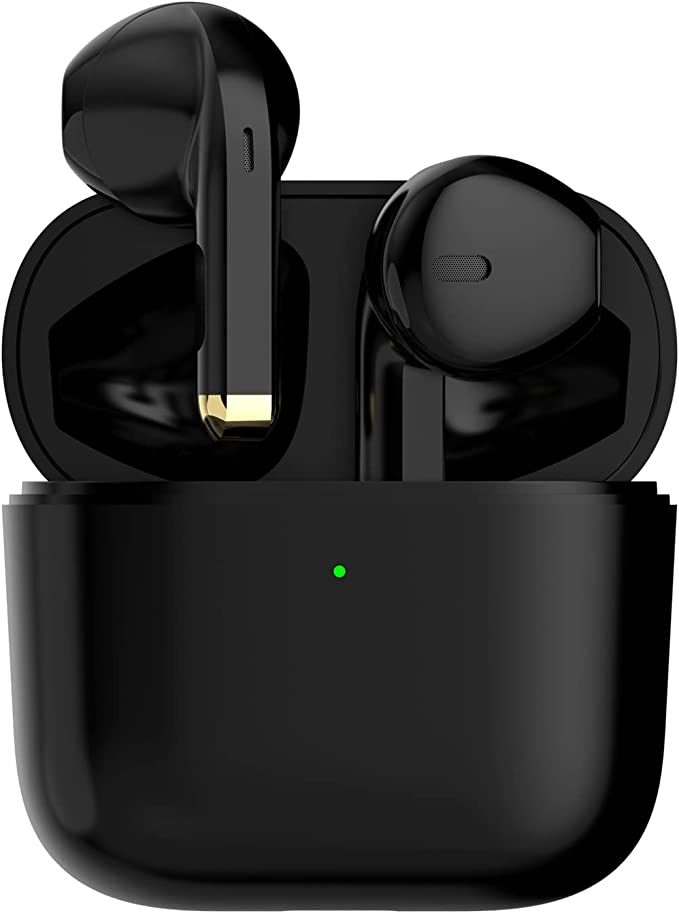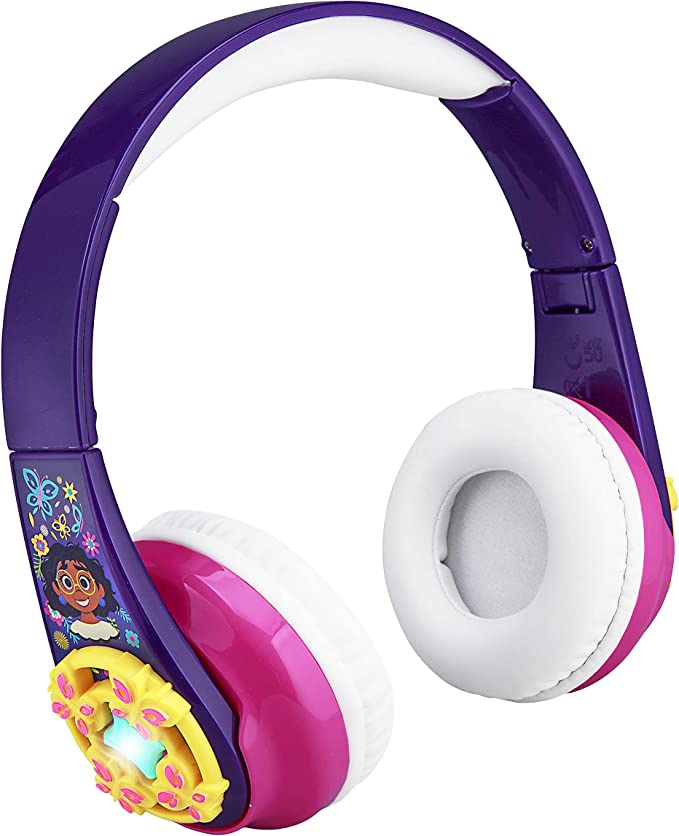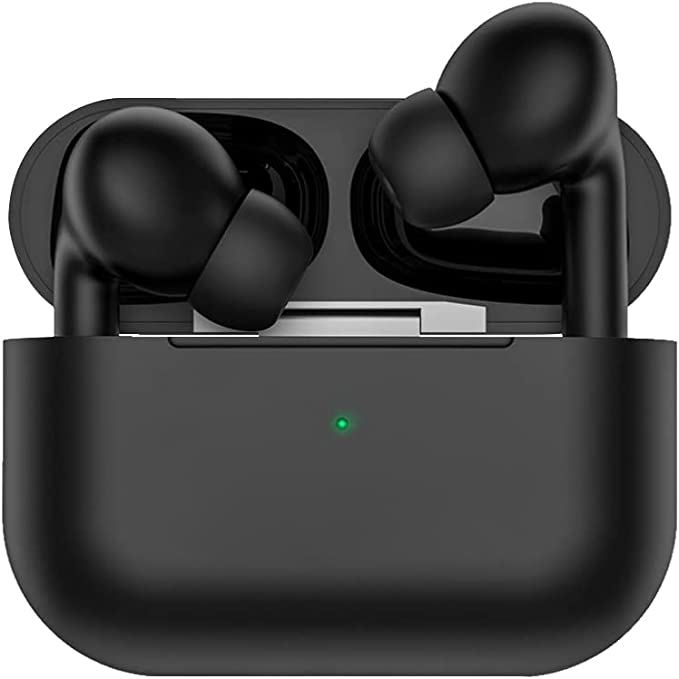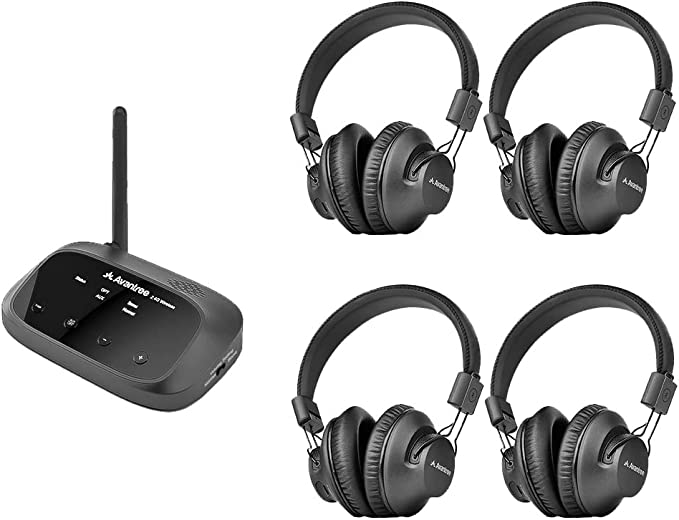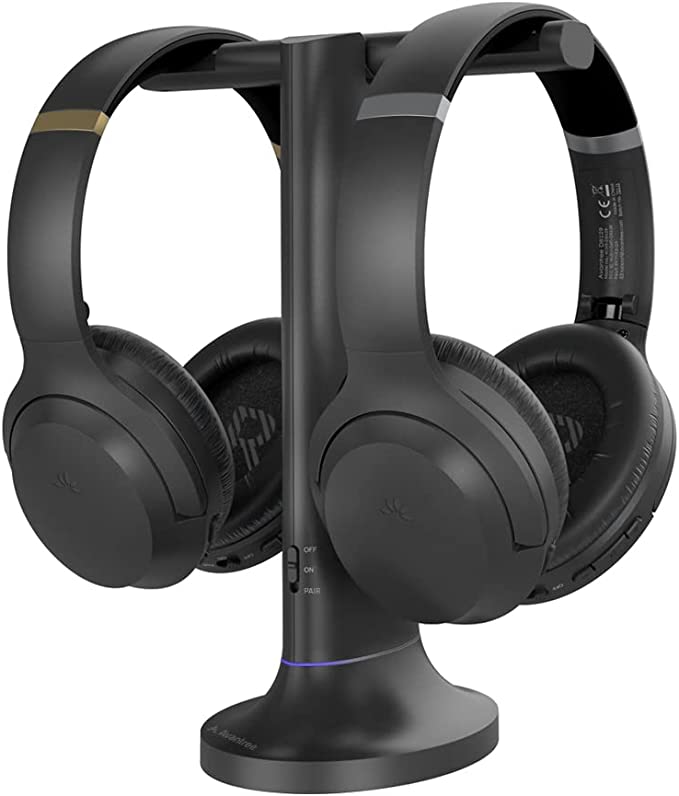iJoy LGE-PRE-STL Wireless Headphones: Decoding the Tech Behind Your Everyday Audio Experience
Update on May 15, 2025, 10:01 a.m.
We move through our days enveloped in personal soundtracks. Whether it’s the energizing beat accompanying a morning run, the focused calm of a concentration playlist during work, or the immersive narrative of a podcast on the evening commute, headphones have become our intimate companions, the gatekeepers to our private auditory worlds. They are ubiquitous, these devices cupped over ears or nestled within them. And often, the more common they are, the less we consider the marvels of engineering and science packed within their unassuming shells.
Let’s take a seemingly ordinary example, something like the iJoy LGE-PRE-STL wireless headphones. You might see them, or headphones very much like them, everywhere. They promise a suite of features: wireless and wired modes, a built-in microphone, FM radio, a Micro SD card slot. But rather than a review, I invite you to join me on a different kind of exploration. Let’s put on our ‘tech goggles,’ metaphorically speaking, and peer inside. What truly makes these everyday companions tick? I think you’ll find the journey more fascinating than you might initially expect, for even in accessible technology, there are remarkable stories of scientific principles brought to life.

The Dance of Invisible Waves: Bluetooth and the Freedom of Wireless
Picture this: you’re moving freely around your home, your phone resting on a distant table, yet the music flows, uninterrupted, into your ears. This everyday magic is often brought to you by Bluetooth. At its heart, Bluetooth is a short-range wireless technology, a kind of personal radio station operating in the 2.4 GHz frequency band (similar to some Wi-Fi, but designed for different purposes). When you “pair” your headphones with your phone, tablet, or laptop, they engage in a sophisticated digital handshake, establishing a secure, low-energy link to stream audio data. It’s a constant, invisible dance of data packets, translated into the sound waves that reach your ears.
The very name “Bluetooth” carries a whisper of history, a nod to Harald “Bluetooth” Gormsson, a 10th-century Danish king famed for uniting disparate Danish tribes. The founders of the Bluetooth Special Interest Group (SIG) saw this as a fitting analogy for a technology designed to unite different devices seamlessly. And for the most part, it does. The iJoy LGE-PRE-STL, offering both “Wireless and Wired” connectivity, taps into this legacy of convenience. The wireless aspect liberates you from the tyranny of tangled cables, a small but significant daily comfort.
However, it’s worth understanding a little about what happens to your audio in this wireless transit, especially with budget-friendly headphones. To send audio efficiently over Bluetooth, it needs to be compressed. The most basic and universally supported codec (coder-decoder algorithm) is SBC (Low Complexity Subband Codec). While functional, SBC is a “lossy” codec, meaning some audio data is discarded to reduce file size for transmission. Audiophiles might notice a difference compared to a wired connection or more advanced codecs (like AAC, aptX), but for everyday listening, the convenience often outweighs any subtle loss in fidelity. The wired option, typically a standard 3.5mm auxiliary cable, bypasses this compression and the need for battery power (for audio playback, at least), offering a reliable backup and a direct, uncompressed signal path. This dual capability is a thoughtful inclusion, providing versatility for different situations – the freedom of wireless when you need it, the reliability of wired when you prefer it or when battery is low.

Your Cone of Silence: The Comfort and Science of Over-Ear Design
Imagine settling onto a bustling train or trying to find focus in a lively open-plan office. You slip on your over-ear headphones, and the cacophony of the outside world recedes, replaced by your chosen audio. This isn’t necessarily high-tech witchcraft; often, it’s the simple, elegant physics of passive sound isolation at play. The iJoy LGE-PRE-STL, with its over-ear design, aims to create precisely this personal sanctuary. The earcups are designed to fully enclose your ears, forming a seal against your head. This physical barrier does a surprisingly effective job of dampening external ambient sounds. Think of it like wearing earmuffs, but instead of just blocking cold, they’re blocking unwanted noise.
The materials used are crucial here. The mention of “memory protein earmuffs” (a common marketing term for soft, pliable synthetic leather covering foam) highlights this. Such materials are chosen for their ability to conform to the unique contours of your head and ears, enhancing both comfort for long listening sessions and the effectiveness of the acoustic seal. The better the seal, the less outside sound can intrude, and the more of the headphones’ own sound output is directed into your ear canal.
It’s important, especially when looking at more affordable headphones, to distinguish this passive isolation from Active Noise Cancellation (ANC). ANC is a more complex technology that uses microphones to detect ambient noise and then generates an opposing sound wave to actively cancel it out. While the iJoy LGE-PRE-STL’s description mentions a “noise canceling design,” in this product tier, it overwhelmingly refers to the passive sound isolation provided by its physical construction. And frankly, well-executed passive isolation can be remarkably effective, especially for mid and high-frequency sounds like chatter or a hissing radiator, without the added cost, battery drain, or occasional “eardrum suck” sensation some associate with ANC.

More Than Just Streaming: The Hidden Talents of Onboard Audio
While streaming from a paired device is the most common use case, the iJoy LGE-PRE-STL boasts a couple of other intriguing audio input methods, each with its own charm and scientific underpinning.
The Personal Jukebox: That Little Micro SD Card Slot
There’s a certain liberation in not being tethered to your phone or an internet connection for your music. The Micro SD card slot transforms the headphones themselves into a standalone MP3 player. Imagine heading out for a run where you’d rather leave your bulky smartphone behind, or traveling through an area with patchy data coverage. Pop in a Micro SD card filled with your favorite albums or podcasts, and you’re set.
The science here is that of flash memory. These tiny cards, no bigger than a fingernail, house an incredible density of transistors that can store digital data (your music files) without needing continuous power. When you select this mode, the headphones’ internal circuitry reads the digital files, a built-in Digital-to-Analog Converter (DAC) transforms the digital ones and zeros back into an electrical audio signal, and the drivers deliver it to your ears. It’s a self-contained ecosystem, a miniature jukebox on your head, saving your phone’s battery and offering a focused, interruption-free listening experience. This feature harks back to the era of dedicated MP3 players but integrates that convenience directly into the headset.
Echoes from the Ether: The Enduring Charm of FM Radio
In an age of on-demand everything, a built-in FM radio receiver might seem like a quaint throwback. Yet, there’s an undeniable, enduring appeal and utility to it. Think of a gardener whiling away an afternoon, a GMRS radio user who wants to listen to local broadcast, or someone wanting live news updates during a power outage when internet access might be down. The FM radio in the iJoy LGE-PRE-STL allows you to tap into these free, over-the-air broadcasts.
FM, or Frequency Modulation, is a method of encoding audio information onto a carrier radio wave by varying its frequency. Your headphones contain a tuner circuit that can scan the FM band (typically 87.5 to 108 MHz) and lock onto the frequency of a broadcasting station. An antenna is crucial for picking up these radio waves; in headphones, this might be a wire integrated into the headband or even utilize the auxiliary cable when it’s plugged in (even if not for audio input). While not offering the curated perfection of a personal playlist, FM radio brings the serendipity of discovering new songs, the connection to local community broadcasts, and a reliable, data-free stream of entertainment and information. It’s a resilient technology with a charm all its own.

The Tangible Tech: Design, Control, and Capturing Your Voice
Beyond the invisible waves and digital bits, the physical design of headphones plays a huge role in their usability and your experience. The “Foldable Design” of the iJoy LGE-PRE-STL, often a tri-fold mechanism, is a simple yet effective piece of mechanical engineering. Hinges and carefully chosen materials allow the headphones to collapse into a more compact form, making them easier to stow in a bag – a practical consideration for portability.
Then there are the controls. The “5-button control” system is an exercise in human-computer interaction. These tactile buttons for play/pause, volume adjustment, track skipping, and call management are designed for easy access without needing to fumble for your phone. Good ergonomic design means you can quickly learn their placement and operate them by feel.
And, of course, the “Built in Mic for Hands Free calling.” This tiny component is a transducer, much like the speaker drivers in the earcups, but working in reverse. It converts the sound waves of your voice into an electrical signal, which can then be transmitted via Bluetooth for a phone call or used for voice commands. The clarity of this microphone is critical for call quality, relying on its sensitivity and sometimes on basic noise reduction algorithms to separate your voice from background noise.

The Heartbeat of Your Headphones: Understanding Battery Life
Wireless headphones, by their nature, need power. The iJoy LGE-PRE-STL product information mentions a “15 Hour” battery life. This is the lifeblood of your untethered listening. Inside, you’ll almost certainly find a rechargeable Lithium-ion or Lithium-polymer battery. These batteries are marvels of electrochemical engineering, storing energy by shuttling lithium ions between an anode and a cathode through an electrolyte.
A 15-hour claim is quite respectable, suggesting enough juice for a full day of intermittent use or several long listening sessions. However, it’s always wise to take such figures as optimal estimates. Real-world battery life can be affected by various factors: listening volume (higher volumes draw more power), distance from the Bluetooth source (a weaker signal might require more power to maintain), and even the ambient temperature. The convenience of simply plugging them in to recharge (likely via a Micro USB port, common for such devices) means your auditory adventures are rarely on hold for long.
Sound Talk Decoded: What Do “Deep Bass” and “Frequency Range” Really Mean?
Product descriptions often toss around terms like “Deep, accurate bass response” or “Extended frequency range.” Let’s briefly demystify these. Sound is vibration, and its frequency (how fast it vibrates) is measured in Hertz (Hz). Humans with healthy hearing can typically perceive sounds from about 20 Hz (a very low rumble, the kind you feel as much as hear) up to around 20,000 Hz (a very high-pitched, almost piercing sizzle). An “extended frequency range” implies the headphone drivers – the miniature speakers in the earcups – are designed to reproduce a wide swath of this audible spectrum.
“Deep, accurate bass” refers to the headphones’ ability to reproduce those low-frequency sounds (typically below 250 Hz). The “deep” part suggests impact and richness in things like bass guitars, kick drums, or the rumble of an engine in a movie. “Accurate” is key – it means the bass should be clear and defined, not just a muddy, overwhelming boom that drowns out other parts of the music. Achieving this balance depends on the quality and tuning of the drivers and the acoustic design of the earcups.
The iJoy LGE-PRE-STL also mentions a built-in “Equalizer” (EQ). An equalizer allows you to adjust the volume of specific frequency bands – boosting the bass for more thump, raising the treble for more sparkle, or tweaking the midrange for vocal clarity. It’s a way to tailor the sound signature to your personal preference or to better suit different genres of music, giving you a degree of control over your sonic landscape.

Closing Thoughts: The Accessible Wonder of Everyday Science
And so, our brief journey inside a pair of everyday headphones like the iJoy LGE-PRE-STL comes to a close. What we find is not just plastic and wires, but a confluence of remarkable scientific principles and engineering ingenuity. From the intricate dance of Bluetooth radio waves to the fundamental acoustics of sound isolation, from the solid-state magic of flash memory to the enduring legacy of FM broadcasts, these devices are small testaments to how complex technology can become both accessible and affordable.
Understanding a little of the “how” and “why” behind the features doesn’t diminish their magic; if anything, it enhances our appreciation. It empowers us to be more discerning consumers, to understand the trade-offs, and to marvel at the quiet symphony of science that powers our daily soundtrack. So, the next time you slip on your favorite pair of headphones, take a moment. Listen not just to the music, but to the echoes of innovation within. Keep listening, keep questioning, and never lose your curiosity for the wonders hidden in plain sight.
